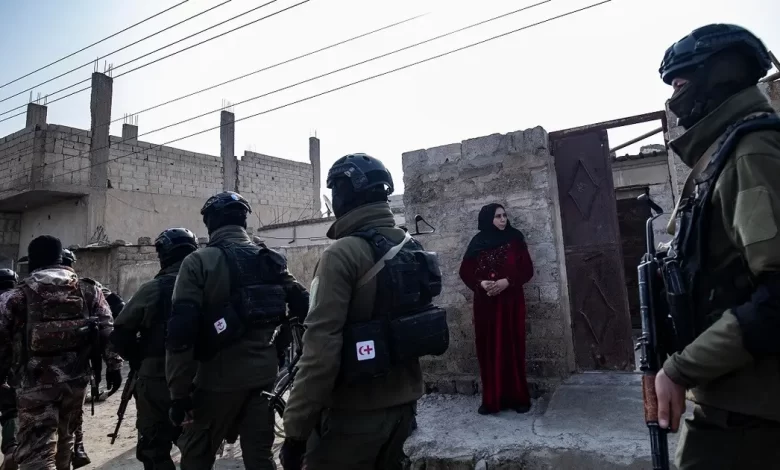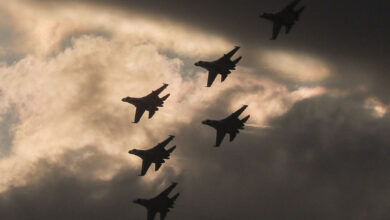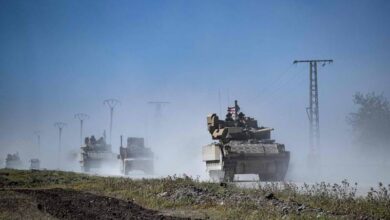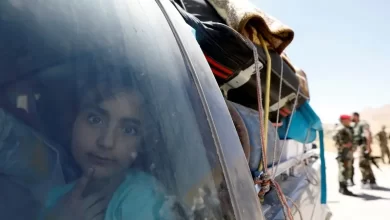Fighting between rival US-backed groups in Syria could undermine war against ISIS
The weeklong clashes between rival US-backed groups in eastern Syria, where hundreds of American troops are deployed, point to dangerous seams in the coalition that has kept a lid on the defeated ISIS for years. That could be an opportunity for the radical group to reemerge.

The violence also points to rising tensions between Kurds who dominate the region and the mainly Arab population, opening the door for Syrian President Bashar al-Assad and his allies, Russia and Iran, to try to make inroads in an oil-rich territory where they seek to drive out US troops and restore Damascus’ rule.
Eastern Syria has largely been off the world’s radar, particularly in the United States. But the US has had some 900 troops stationed there alongside an unknown number of contractors ever since the defeat of ISIS in 2019. The troops, who first arrived eight years ago, work alongside the Syrian Democratic Forces, an umbrella group of fighters dominated by the Kurdish.
At the same time, a US-supported Kurdish-led administration has governed parts of northern Syria and most of Syria east of the Euphrates River, including key oil fields, with government forces and Iranian-backed groups positioned just across the river on the western bank.
The clashes involve the Syrian Democratic Forces and an allied faction, the Arab-led Deir el-Zour Military Council. The trigger was the August 27 arrest by the SDF of the council’s commander Ahmad Khbeil, better known as Abu Khawla. The SDF accused Khbeil of criminal activity, corruption and of opening up contacts with the Damascus government and Iranian-backed groups.
Fighting broke out between the SDF and Khbeil’s loyalists, who were then joined by hundreds of Arab tribesmen in battles that spread and left tribesmen in control of several villages outside the city of Deir el-Zour. At least 90 people have been killed and dozens wounded.
Kurdish leaders accuse Iranian-backed militias and the Syrian government of fomenting the violence. Speaking to The Associated Press, SDF spokesman Farhad Shami denied local Arab fighters joined the clashes, saying it was fighters loyal to Damascus who crossed the river.
“Iran and Assad regime want to depict this unrest as a result of an ethnic conflict between Arabs and Kurds,” Elham Ahmad, the leader of the Syrian Democratic Council, the political wing of the SDF, wrote on X, formerly known as Twitter. Their ultimate aim, she said, was to force US troops to leave.
But some warn the violence reflects local Arab resentment of Kurdish domination. Opposition activists said contacts were underway with tribal leaders to reach a cease-fire.
“This is an unprecedented escalation between SDF and Deir el-Zour residents,” says Omar Abu Layla, a Europe-based activist who heads the Deir Ezzor 24 media outlet, which covers news in the region.
“This is an indication of the bad policy implemented by the SDF and wrong calculations by the Americans,” said Abu Layla. He said the solution could be to name a replacement for Khbeil and give Arabs more influence in local councils.
If the fighting endures, it could deepen Kurdish-Arab rifts. That could open the door for ISIS remnants to attempt a comeback.
The US military has called for an end to the fighting, warning that “distractions (from opposing ISIS) create instability and increase the risk of Daesh resurgence,” using an acronym for ISIS.
Over the weekend, a meeting was held among SDF figures, tribal leaders and US officials, including Maj. Gen. Joel Vowell, the commander of Operation Inherent Resolve, which oversees US military operations against IS, the US Embassy announced. It said they agreed on the “importance of addressing the grievances of residents” in Deir el-Zour, avoiding civilian deaths and the need for de-escalation as soon as possible.
The SDF pushed ahead in their offensive over the weekend, capturing two villages and surrounding the main Arab tribesmen’s stronghold in Diban. SDF chief commander Mazloum Abdi told a local news agency that the US-led coalition helped with aerial support during the offensive, but the US military did not confirm or deny when contacted by The Associated Press.
ISIS once controlled large parts of Iraq and Syria but was defeated after a long, grueling war led by the US and allies including the SDF. The radical group lost its last sliver of land in eastern Syria in 2019, but its fugitive cells hiding in the region have continued low-level attacks, killing dozens over the years.
Myles B. Caggins III, senior fellow at the New Lines Institute, said the clashes “present an opportunity for ISIS cells that nest in the Euphrates River Valley to emerge.”
The violence also could give an opportunity for Damascus and Iran, pushing their demands for the Americans to leave.
The commander of the pro-government Baqir Brigade militia, Khaled al-Hassan, told an Iranian media outlet that the violence “is a new uprising by Syrians against the American occupation and its militias,” referring to the SDF.
During a recent visit to Iran, Syrian Foreign Minister Faisal Mekdad warned that “American occupation forces should withdraw … before they are forced to do so.”
In mid-July, dozens of Arab tribesmen and members of the pro-government National Defense Forces held a rally in Deir el-Zour province that was attended by a Russian general.
“The end of American forces will be at the hands of Arab tribesmen who stand behind the Syrian army,” an NDF commander said during the ceremony.
In March, a suspected Iranian-linked drone attack hit a US base, killing a contractor and wounding another, along with five American troops. American warplanes responded with airstrikes on sites used by groups affiliated with Iran’s Revolutionary Guard. President Joe Biden said the US would respond “forcefully” to protect its personnel.
“Iran, Russia, and the Syrian regime have a shared interest in the departure of US forces from Syria,” according to a report released last month by The Institute for the Study of War, a Washington think tank.
Crucial for Tehran, Iran has had a land corridor of allies linking it to the Mediterranean Sea ever since Syrian forces and Iranian-backed groups captured areas along the border with Iraq from ISIS in 2017.
Last week’s clashes came after Lebanese and Arab media outlets reflecting Iran’s point of view claimed that the Americans intended to sever that link by capturing the strategic border town of Boukamal.
The coalition’s commanding general, US Maj. Gen. Matthew McFarlane denied the reports. “The coalition is not preparing for military operations to cut off anybody except Daesh,” he said.
But Iran and its allies say any attempt to close the Iraq-Syria border is a red line.
“I see that closing the gate between Damascus and Baghdad as a declaration of war,” said Syrian political analyst Bassam Abu Abdullah, whose comments usually reflect the government’s point of view.
The Associated Press





